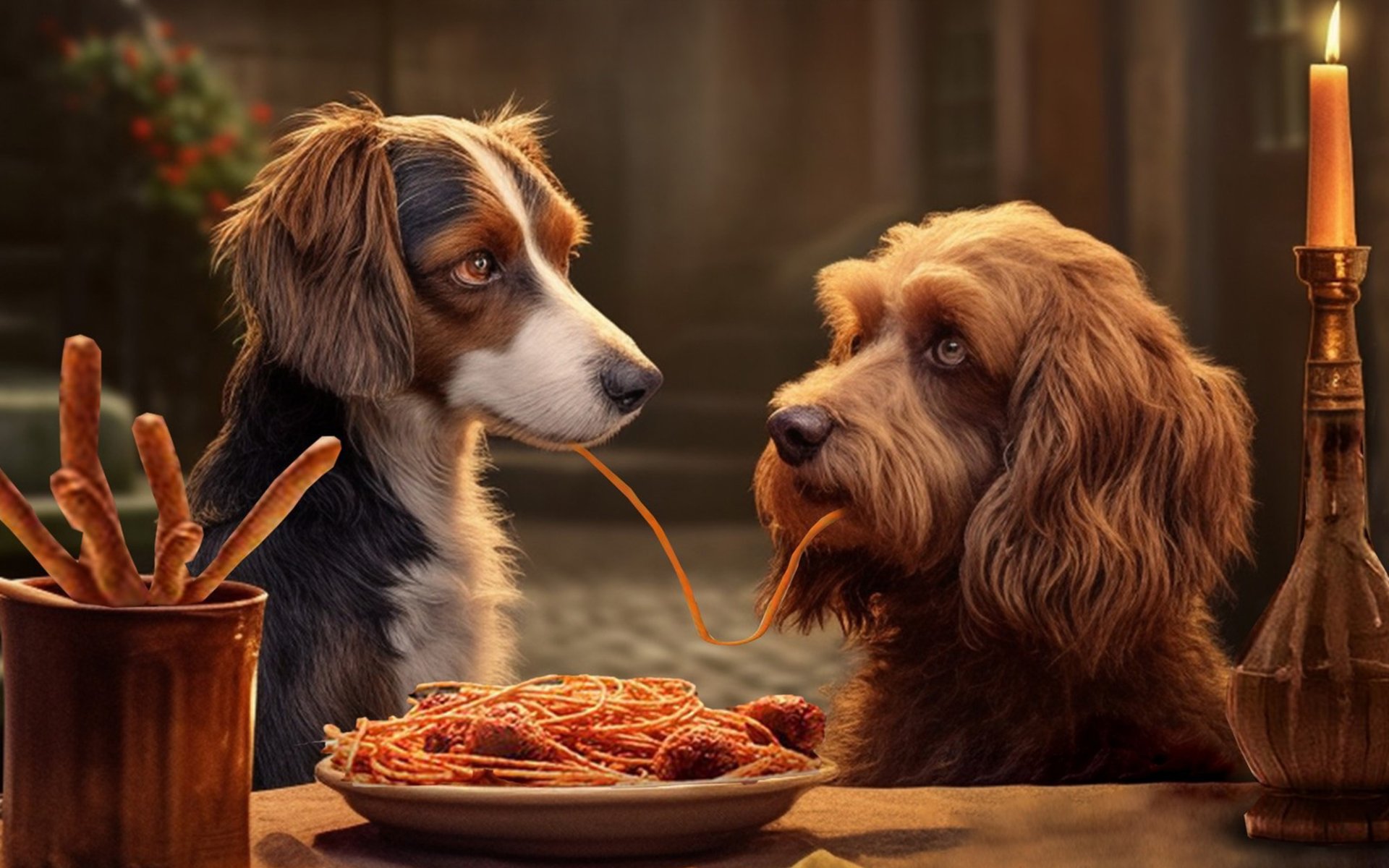The Iconic Spaghetti Scene from the Classic Animated Film Lady and The Tramp

Have you ever found yourself thinking of Lady and the Tramp whenever you eat spaghetti? Although this scene from the classic animated film dates back decades, believe it or not, this incredibly romantic moment between the two dogs remains etched in the hearts of many today.
The Legendary Spaghetti Scene That Captured Audiences' Hearts
Recently, an independent international research and insights agency called Perspectus Global conducted a survey to determine which restaurant scene from a movie most captivated Britons. Two thousand British people participated in the survey, and the results showed that 60% of respondents favored the legendary spaghetti scene from Disney's classic animated film "Lady and The Tramp," released in 1955.
When asked for the main reasons why they loved this animated scene, most people gave similar answers: the scene not only depicted eating but also portrayed the romance between two dogs from different social statuses who fell in love.
The story of these two dogs is deeply human. Tramp, a stray dog, rescued Lady, a pampered house dog, from a pack of vicious dogs. This encounter marked the beginning of their love story and led to the incredibly romantic spaghetti scene.
The Story Behind the Iconic Scene That Almost Didn't Make It
However, before it became the incredibly romantic spaghetti scene that grossed over $187 million for the animation, this scene almost didn't make it into the film. It initially failed to get approval from Walt Disney, who thought the image of two dogs eating spaghetti together would appear too messy and unappealing for the movie. But Frank Thomas, a key animator at the studio and the designer of this scene, refused to give up. He insisted that Walt Disney include this scene in the film. So, he re-animated the scene in a rough motion test to help Disney understand all the movements within the scene.
As soon as he saw Thomas's motion test, Disney immediately fell in love with the scene. This scene didn't just show dogs eating; it conveyed a wealth of emotion that made the audience feel the romance, especially the kissing moment when Tramp and Lady ate the same strand of spaghetti and the scene where Tramp nudged a meatball towards Lady. For these reasons, Walt Disney changed his mind and put the scene back into the film, ultimately becoming a massive revenue generator for the animation.
Italian Elements That Enhance the Romance
However, this spaghetti scene wouldn't have been so romantic without small, supporting elements like the candlelight from the Chianti wine bottle, Italian breadsticks, and the song Bella Notte performed by the two chefs.
From a deeply romantic story that almost didn't make it into the animation, it led to an unforgettable iconic Disney scene. Thanks to Thomas's persistence, Walt Disney changed his mind; otherwise, we wouldn't have seen Tramp and Lady sharing spaghetti and meatballs in such a romantic way. And because the animation became so famous, the food and elements in the scene naturally became famous too. Many people who finished watching the animation rushed to their kitchens to make spaghetti and meatballs. This is why when many people eat spaghetti, they are reminded of the animated film "Lady and The Tramp."
As we reach the end, you might wonder why the food in this story is Italian-style, even though the setting is Walt Disney's hometown in the United States. This is because Walt Disney wanted to showcase the cultural diversity of America and Italy. During that era, many Italians immigrated to America, so having Italian-American style food in the scene was not unusual. He specifically chose spaghetti and meatballs because, at that time, it was a very popular dish, having been developed by Italian immigrants in the United States and becoming a renowned dish.
But if you observe closely, he didn't just pay attention to that; even the wine bottle and bread on the table had an Italian flair. The bread on the table was traditional Italian Bread Sticks called Grissini, which are popular as snacks with wine or paired with pasta.
The wine bottle used as a candle holder was Chianti wine from the Tuscany region, presented in its traditional round, plump bottle encased in a straw basket. This type of bottle is called a Fiasco, designed to hold wine for consumption, convenient for carrying and transportation, and has appeared in significant ceremonies throughout Italian history since the 13th century. Today, wine in Fiasco-shaped bottles is becoming rare, with only a few Chianti wineries still producing them.


